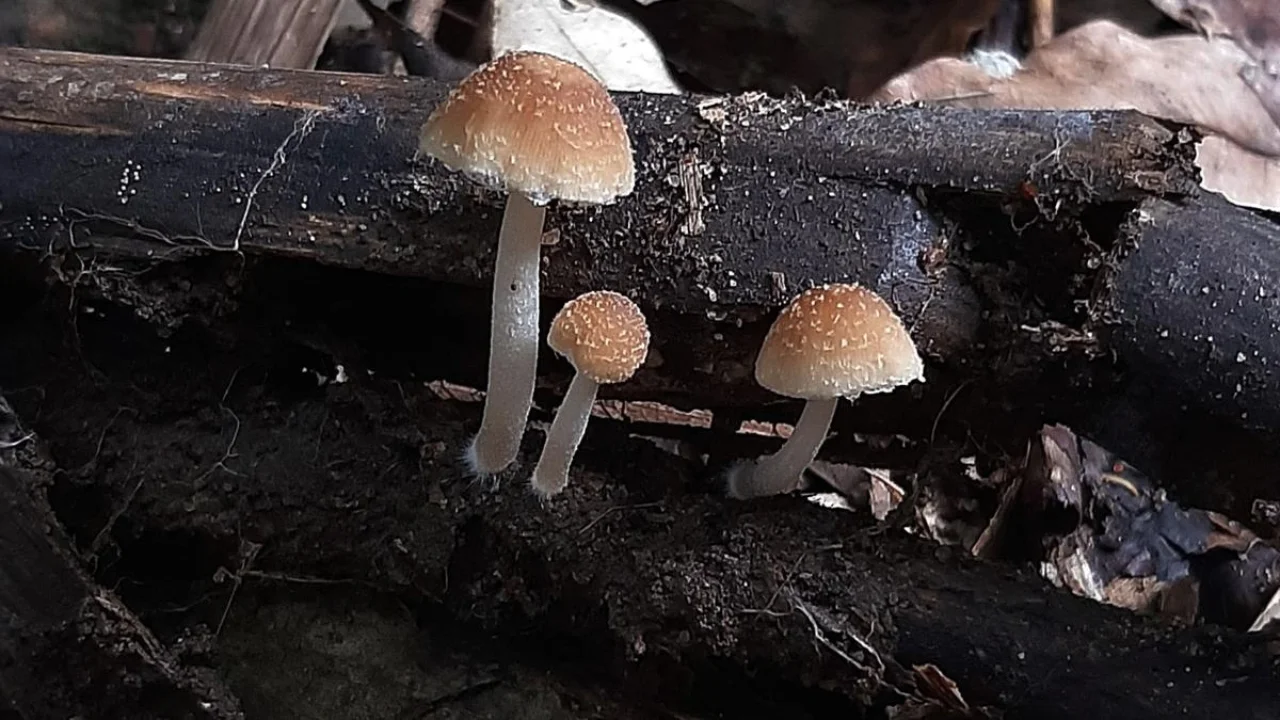A new species of mushroom, Candolleomyces albosquamosus, discovered on the campus of the Jawaharlal Nehru Tropical Botanic Garden and Research Institute (JNTBGRI) in Kerala, is a significant addition to the region’s biodiversity. This discovery highlights the importance of exploring and understanding the fungal diversity in the Western Ghats, an area known for its rich biodiversity. The research conducted by JNTBGRI contributes to our knowledge of the unique flora and fauna in this region.
More About the New Mushroom Species
The discovery of Candolleomyces albosquamosus, a new species of mushroom, provides important insights into the biodiversity of the Western Ghats in Kerala. Here are the key details about this discovery:
Genus Identification
- The new species belongs to the genus Candolleomyces, which is a relatively small genus with only 35 recognized species worldwide.
- Researchers C. K. Pradeep and P. K. Nayana from JNTBGRI’s Microbiology Division published the discovery in the scientific journal Phytotaxa.
Distinct Features:
- Candolleomyces albosquamosus is characterized by its delicate appearance and has a honey-yellow cap.
- The mushroom features a bell-shaped cap covered in white, woolly scale-like structures, giving it a unique appearance.
- Mature specimens have a cap diameter ranging from 12 mm to 38.5 mm and a height of approximately 58 mm.
Habitat and Morphological Studies:
- Specimens of this mushroom were collected from the natural forests on the JNTBGRI campus, specifically from dead logs and bamboo culms.
- Detailed morphological and molecular studies confirmed the classification of these specimens as previously undescribed species of Candolleomyces.
Ecological Significance:
- Mushrooms like Candolleomyces albosquamosus are essential for decomposing plant litter in tropical forests, contributing to nutrient cycling in the ecosystem.
- The discovery underscores the ecological importance of secondary saprophytic fungi in forest ecosystems.
Biodiversity in the Western Ghats:
- The Western Ghats region in Kerala is renowned for its rich fungal diversity, with many species being endemic to the area.
- This discovery highlights the need for ongoing exploration and research into the diverse flora and fauna of the Western Ghats.
The identification of Candolleomyces albosquamosus adds to our understanding of the unique biodiversity in this region. It emphasizes the significance of preserving and studying these ecosystems.
About the Western Ghats
The Western Ghats are a mountain range that runs parallel to the western coast of India, covering a length of over 1,600 kilometers. They are one of the world’s most biodiverse regions and have been designated as a UNESCO World Heritage Site.
- The Western Ghats are home to a wide variety of plant and animal life, including many endangered and endemic species.
- Some of the most notable animals that can be found in the Western Ghats include the Indian elephant, the tiger, the leopard, the gaur, the sambar, the Nilgiri tahr, and the Malabar civet.
- The Western Ghats also play an important role in regulating India’s monsoon season.
- The mountains act as a barrier to the monsoon winds, forcing them to rise and condense, which results in rainfall on the western side of the country.
- The Western Ghats are a vital ecosystem that provides a number of important services to the people of India.
- They are also a major tourist destination and are home to a number of popular hill stations, such as Ooty, Munnar, and Coorg.
The Western Ghats are a unique and precious natural treasure. It is important to protect and conserve this mountain range for future generations.
- Weekly Current Affairs 2025 PDF For Bank, SSC, UPSC Exams
- Unsung Heroes of India: 10 Unknown Freedom Fighters You Should Know
- 26 December Current Affairs 2023 in English
- Daily Current Affairs 2025, Check Today’s Current Affairs
- April Month Current Affairs 2024, Download PDF
- June Month Current Affairs 2024, Download PDF

Hello, I’m Aditi, the creative mind behind the words at Oliveboard. As a content writer specializing in state-level exams, my mission is to unravel the complexities of exam information, ensuring aspiring candidates find clarity and confidence. Having walked the path of an aspirant myself, I bring a unique perspective to my work, crafting accessible content on Exam Notifications, Admit Cards, and Results.
At Oliveboard, I play a crucial role in empowering candidates throughout their exam journey. My dedication lies in making the seemingly daunting process not only understandable but also rewarding. Join me as I break down barriers in exam preparation, providing timely insights and valuable resources. Let’s navigate the path to success together, one well-informed step at a time.






